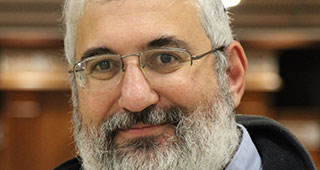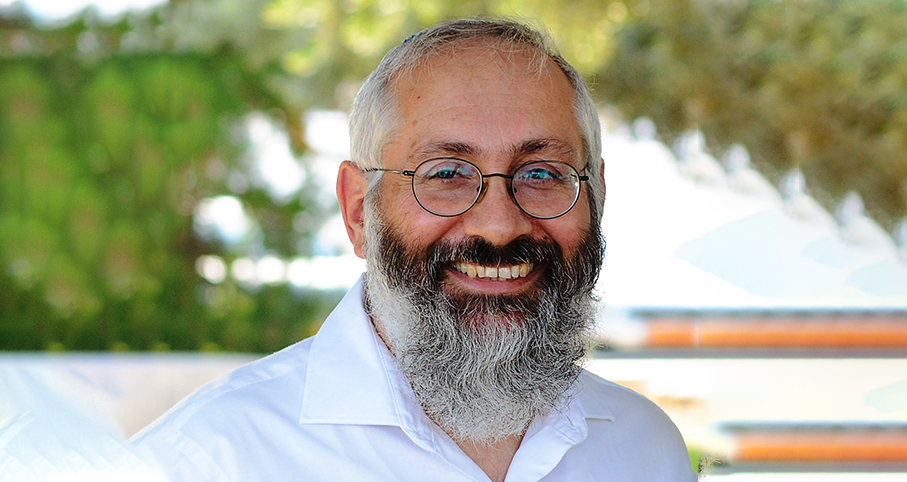Beit Midrash
- Torah Portion and Tanach
- Vayikra
- Shmini
Moshe and Aharon instruct the people about the animals permitted for human consumption. Such animals must have a split hoof and a digestive system that includes the chewing of the cud. Animals that display only one of these characteristics are not kosher. For example, the camel has a split hoof but does not chew its cud and is therefore not kosher.
Mammals are kosher animals. They suckle their offspring, live on land and have the characteristics both of a בהמה (domesticated animal) and a חיה (independent animal). Depending on the context, each of these terms can refer to a specific category or the entire animal world. The preceding verse, for example, juxtaposes the two words in a manner indicating that, for the specific purpose of food consumption, there is no difference between the kosher חיה and the kosher בהמה.
The word בהמה is from the root ב-ה-ם "to subordinate to another". A domesticated animal is subordinated to its owner. The word חיה is from the root ח-י-ה "to live independently".
What are the two identifying traits of a kosher animal? The first is the digestive process of מעלה גרה (regurgitate food). However this phrase does not completely describe the digestive process required to make an animal kosher. That process consists of several stages: 1) grinding the ingested food between a toothless upper jaw and the lower incisors, 2) passing the ground food into the paunch where it is softened and then passed into the second stomach, 3) Forming the food into balls and returning it to the mouth (מעלה גרה) to be properly chewed, 4) passing the food to the third stomach and then into the rennet bag to be digested.
The word מעלה is from the root ע-ל-ה "to rise up". Its causative form means "to bring up". The word גרה is from the root ג-ר-ר "to swirl around". In this verse it connotes a "grinding" in a circular motion.
The second identifying trait is מפרסת פרסה שסועה (cover the split hoof). The animal must have hoofs that are completely split and covered by a horn-type epidermis.
The words מפרסת פרסה are from the root פ-ר-ס "to cover". The word שסועה is from the root ש-ס-ע "to split".
The Torah then lists several animals that appear to have both identifying traits but in reality have only one of them. These include the camel (גמל), the rabbit (שפן), the hare (ארנבת) and the pig (חזיר).
The word גמל is from the root ג-מ-ל "to develop completely". The camel requires little nourishment. The word ארנבת is from the root א-נ-ב "to spring out". The word שפן is from the root ש-ו-ף "to emerge". The word חזיר is from the root ח-ז-ר "to hold back development".
The underlying purpose of the Torah’s dietary laws is not the promotion of good health, as is popularly believed. The reason for the prohibition of eating non-kosher animals is clearly stated in the final phrase of the verse: טמא הוא לכם (it is impure for you).
The word טמא is from the root ט-מ-א "to contaminate".
These laws serve as another example of the requirements mandated by God for maintaining the state of קדושה (moral holiness) that is required of every Jew. The טומאה of non-kosher food is equated with that of טומאת מגע (contact with impurity) that applies in the Mikdash. Both symbolically express the imperative of maintaining holiness of thought and deed.
The word קדושה is from the root ק-ד-ש "to prepare for a task and to dedicate all resources to its accomplishment". The word מגע is from the root נ-ג-ע "to touch improperly".
The Torah first mentions refraining from eating non-kosher meat in Parashat Mishpatim, which sets down the basic norms for Jewish society. The Jews are admonished to pursue not only their physical needs, but how to become a גוי קדוש (holy nation).
The word גוי is from the root ג-ו-ה "to concentrate disparate elements". A nation is made up of many different groups.
Further evidence that the dietary rules are not health-related is that they apply only to Jews. The final verse ends with the word לכם (to you). If the non-kosher animals were harmful to the human body, the rules should govern all humans, not only Jews. In the realm of morality, on the other hand, it is specifically the Jew who must constantly seek to elevate his moral status to reach the level of קדושה. One of the ways of achieving this moral elevation is by avoiding impurity both in the מקדש and in the food that one eats.
Copyright © 2014, Matityahu Clark. All Rights Reserved. This is an excerpt from the forthcoming Hirsch At Your Table, a collection of brief divrei torah based on R. Samson Raphael Hirsch’s Torah Commentary.

























